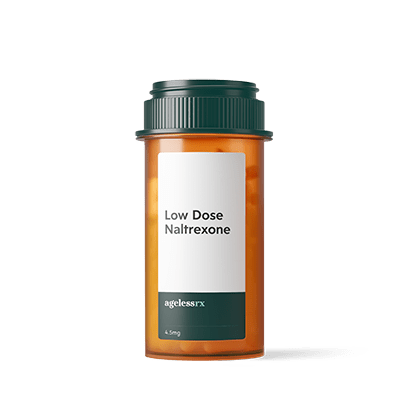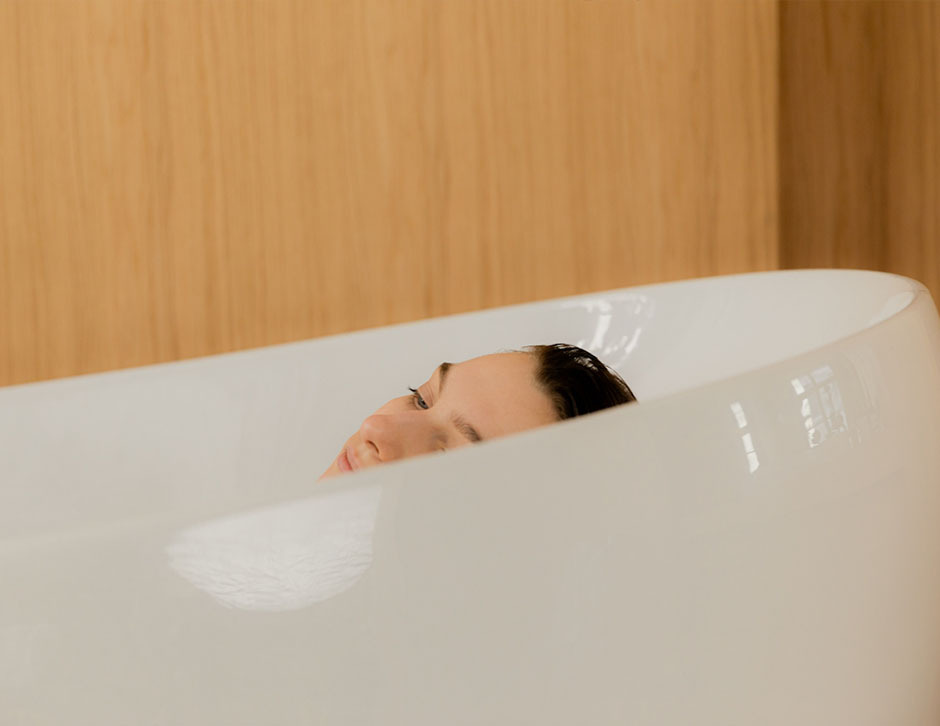LDN Product Guide
LDN is generally considered a safe and well-tolerated treatment to reduce inflammation and help re-balance the immune system. See below for important usage instructions.
Getting started

Generally, AgelessRx recommends a gradual introduction to LDN via a standard protocol*:
- Take 1 capsule (1.5mg) per day for the first 10 days
- On Day 11, ramp up to two capsules (3mg) per day for the next 10 days
- On Day 22, ramp up to three capsules (4.5mg) per day thereafter
- It is best to take your LDN at bedtime, between 9pm and 2am
If, for any reason, you are having difficulty tolerating your LDN or are unable to ramp up to the full dose, please report this on your LDN Check-in or contact AgelessRx.
Possible side effects
During the first 3 to 5 days of taking LDN, you may experience mild to moderate levels of the below side effects. Side effects typically diminish on their own by Day 5. To reduce the risk of side effects, start with the appropriate protocol (standard or modified) as outlined above.
- Vivid dreams
- Mild anxiety
- Insomnia
- Headache
Occasionally, sleep disturbance is bad enough to warrant taking LDN to the morning or afternoon instead of at night. If more troubling side effects occur, this is usually an indication of deeper health issues and needs to be addressed by a functional medicine provider before resuming LDN.
For a full list of possible side effects, click here.
Important safety information
- Naltrexone cannot be taken with opioid or narcotic pain medication such as codeine, tramadol, oxycodone (Percocet), hydrocodone (Vicodin, Norco); it can cause serious withdrawal symptoms. For short-term use (i.e. tooth extraction), stop LDN for as long as you need the pain medication and resume LDN 48-hours after your last dose of pain medication
- If you are scheduled for any kind of procedure requiring sedation, stop LDN at least 48-hours ahead of time; you may resume LDN 48-hours after the procedure
- Naltrexone is NOT a controlled substance and is not classified by the DEA, despite the common misconception by many doctors and pharmacists
- If you are on thyroid medication, you may need to monitor your thyroid levels more closely as you start LDN. If you develop symptoms of hyperthyroidism while taking LDN, such as heart racing, increased anxiety, restlessness, or trouble sleeping, please stop LDN and talk to your doctor who prescribes your thyroid medication
Be sure to communicate with your prescriber prior to taking LDN if you have any of the following conditions:
- Thyroid Conditions (see Important Safety Information on next page)
- Lyme Disease or other Chronic Infections (EBV, CMS, Bebesosis, Borellia, etc.)
- Mast Cell Activation Syndrome/Disease (MCAS/MCAD)
- Ehlers Danlos Syndrome (EDS)
- Multiple chemical sensitivities or drug allergies (3 or more)
- Mold or black mold illness or exposure
- Mental illness (e.g. schizophrenia)
- Recent opioid/narcotic use
Additional resources
-

Longevity in the News: Dr. Attia on Low Dose Naltrexone
For Peter Attia, Low Dose Naltrexone may be the new go-to pain treatment. Explore his talk on LDN with Dr. Mackey from his latest podcast.
-

What to Do If You’re Not Seeing Benefits with Low Dose Naltrexone
Not seeing results with LDN? Dr. Z offers strategies to manage expectations, adjust doses, and optimize therapy for better long-term results.
-

How Long Do You Need to Take Low Dose Naltrexone (LDN)?
Discover how long you need to take Low Dose Naltrexone for the best benefits, with expert insight from Chief Medical Officer, Dr. Z.
